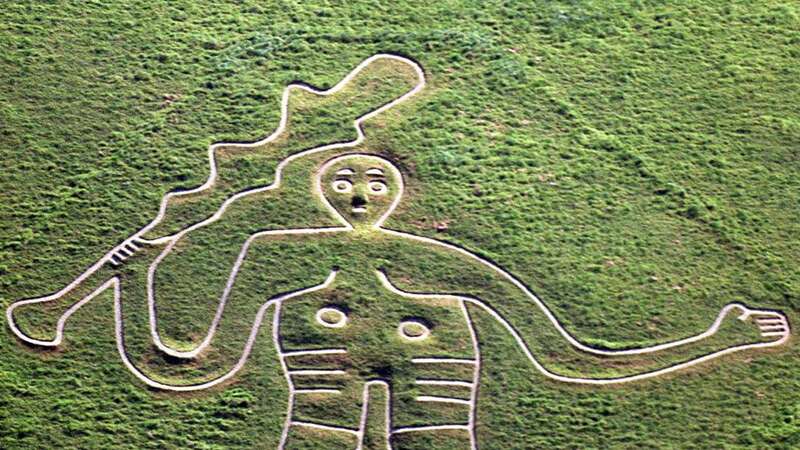The famous chalk figure of the Cerne Abbas Giant was cut out no later than 1100 AD, according to a new study.
The famous carving on the Dorset hillside is 180 feet high and depicts a giant holding a huge club aloft and displaying an erection, cut out in chalk. It was said that women struggling to conceive would increase their chances by having sex atop the giant phallus. Archaeologists have long argued over when the figure was first cut, with a timeline ranging from Roman times or even earlier right through to the 17th century.
Now a new study from two academics at Oxford and Oslo Universities has narrowed the timeline with experts concluding it was constructed between 700AD and 1100AD, most likely at the later end. Published in Speculum: A Journal of Medieval Studies, the team working with the site owners the National Trust used a technique called optically stimulated luminescence to get their results.
OSL is a method for dating when minerals, in this case the quartz in the chalk, were last exposed to sunlight. Trenches were dug at various points to obtain early samples of the giant. Authors Dr Thomas Morcom, postdoctoral fellow at the University of Oslo and Dr Helen Gittos, associate professor in Medieval History at the University of Oxford, say the hillside carving was potentially used as a mustering site for West Saxon armies.
They discovered that the giant has been largely kept visible through scouring, except for two major rechalkings. Dr Morcom said: "OSL cannot precisely date when the figure was cut, but rather when the silt began to accumulate within his outlines and when the hillwash built up downslope of them.
 Beauty spot café perched by edge of cliff forced to move due to coastal erosion
Beauty spot café perched by edge of cliff forced to move due to coastal erosion
"The dates indicate that the outlines of the giant were silting up in the period 7001110 AD, with a midpoint date of 905 (this date comes from his right elbow). This is confirmed by a second sample, from the silt in the bottom of the trench in his right foot, which gave dates of 6501310 AD, with a midpoint date of 980.
"These early medieval dates are confirmed by two other samples from higher up in the stratigraphy which both have a midpoint date of the mid-thirteenth century. They are also supported by the analysis of snail shells in the soils, which reveals that the early levels contain snails first introduced into Britain in the Middle Ages.
"It is therefore most likely that the giant was cut in the early Middle Ages rather than earlier or later, although it could have happened anytime within the period of c. 7001100. The dates also suggest that he was not much cleaned after having been initially cut but that he was then substantially rechalked."
The dating breakthrough also sheds new light on various historical interpretations of the Cerne Giant's identity. Some scholars had thought that the giant was modelled on the myth of Hercules.
Dr Morcom said: "At first glance, an early medieval date seems odd for a figure which looks like the classical god Hercules. However there was in fact a swell of interest in the Greek hero during the ninth century, lending credence to this hypothesis." Another popular theory regarding the inspiration for the giant was its basis on a Saint Eadwold.
The researchers said that the residents of a Benedictine monastery, built in Cerne in the late tenth century, actively propagated this idea, redirecting interest in the giant away from Greek affiliations and towards Christian ones. The new findings on the Cerne Giant's age and history seek to make greater sense of this string of theories regarding its identity.
Dr Gittos concluded: "He probably was first made in the early Middle Ages, specifically in the ninth or early tenth century when there was much interest in Hercules. It is likely that he was made to mark a muster station for West Saxon armies meeting on an estate belonging to the ealdorman of the Western Provinces. By the mid-eleventh century, he had been repurposed by the monastery founded, or refounded, at his feet as an image of Saint Eadwold-a convenient way of erasing Hercules and proclaiming the monastery's rights to the saints' relics."
Read more similar news:
Comments:
comments powered by Disqus

































